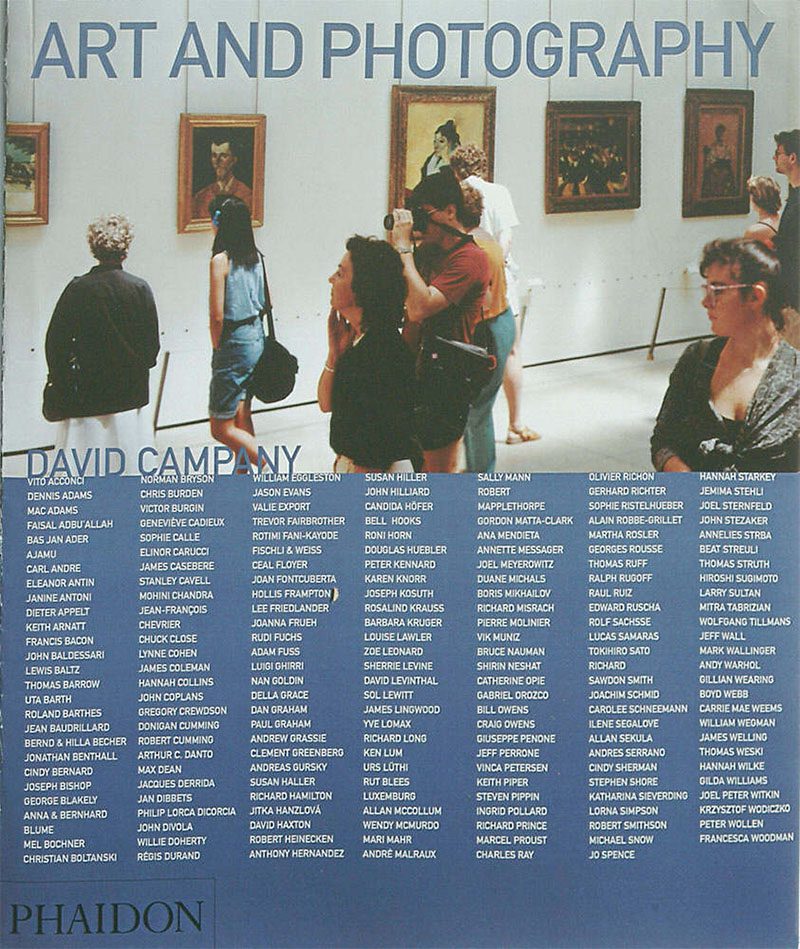BOOK:Art and Photography,Phaidon Publications
 The book Art and Photography by David Campany survey the major presence of photography at the artistic practice from the ‘60s onwards. On its invention, the photograph was considered a purely mechanical, an artless object that could not be included in the fine arts. Despite its increasing use by the 20th Century’s most significant artists, only since the late ‘60s have Museums gradually begun to exhibit and acquire the photograph as an artwork. Today photography is the pre-eminent artistic medium for contemporary artists.
The book Art and Photography by David Campany survey the major presence of photography at the artistic practice from the ‘60s onwards. On its invention, the photograph was considered a purely mechanical, an artless object that could not be included in the fine arts. Despite its increasing use by the 20th Century’s most significant artists, only since the late ‘60s have Museums gradually begun to exhibit and acquire the photograph as an artwork. Today photography is the pre-eminent artistic medium for contemporary artists.
By Efi Michalarou
Photography has proven to be not only a flexible method of image-production, but also its subject. One of the first uses of photography was in knowledge creation, as a tool for documentation and memory. David Campany charts how photography began to be recognised through publications, museum shows and dedicated galleries during the second half of the 20th Century. Gradually the discussion of the role of photography moved away from the initial questions about whether photography will supplant painting to an exchange between the two. After the introductory essay, eight illustrated chapters focus on themes that characterise recent thinking in art history and the multiple functions of photography. The chapter “Memories and Archives” looks at how artists study the notion of the archival collection and investigate the production of knowledge. The chapter “Objective Objects” discusses how photographs operate as definitions of things. The immediacy of an unfiltered, objective image brings up questions about the authenticity of photographs and whether anything can truly be recorded objectively. “Traces of Traces” looks at photography as a witness to an event or its aftermath. It functions differently in seemingly similar situations. “The Urban and the Everyday” chapter focuses on how photography documents Western urban life, and this filters through other practices and knowledge. “The Studio Image” goes back to the birthplace of photographic practice. The use of the studio as a subject becomes an encounter with the process and history of photography itself. “The Arts of Reproduction” investigates the ways in which artists try to make sense of the visual world, or the ‘society of the spectacle’. “Just Looking” discusses the meanings of looking and seeing, with examples ranging from Victor Burgin to Hiroshi Sugimoto’s seemingly blank cinema screen. The chapter “The Cultures of Nature” examines photography’s encounters with our relationship with nature. The scope of Art and Photography is ambitious, encompassing a range of themes and a large number of photographers, but the focus never wavers. In-depth and smoothly readable, it is also a good reference book with its artist biographies and a bibliography. The design has clarity and a sense of purpose, effortlessly managing to squeeze in an enormous amount of information.
